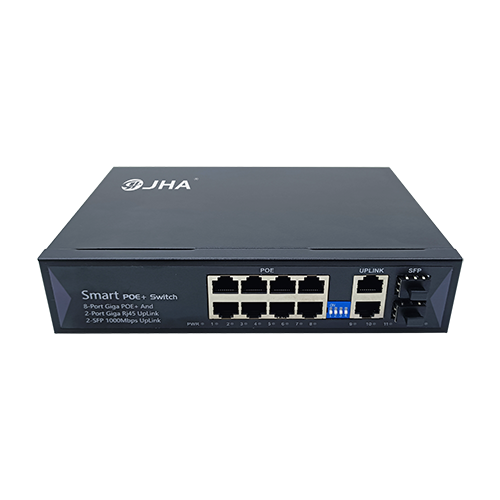1. Non-standard PoE and standard PoE
For the standard PoE that complies with IEEE 802.3af/at/bt standards and has a handshake protocol. Non-standard PoE does not have a handshake protocol, and provides 12V, 24V or fixed 48V DC power supply.
The standard PoE power supply switch has a PoE control chip inside, which has a detection function before power supply. When the device is connected, the PoE power supply will send a signal to the network to detect whether the terminal in the network is a PD device that supports PoE power supply. The non-standard PoE product is a forced-supply network cable power supply device, which supplies power as soon as it is powered on. There is no detection step, and it supplies power regardless of whether the terminal is a PoE powered device, and it is very easy to burn the access device.
2. Common identification methods of non-standard PoE switches
So how to distinguish non-standard PoE switches? The following methods can be tried.
a. Check the voltage
First, roughly judge from the supply voltage. IEEE 802.3 af/at/bt protocol stipulates that the standard PoE port output voltage range is between 44-57V. All standard power supply voltages other than 48V are non-standard products, such as common 12V and 24V power supply products. However, the 48V power supply may not necessarily be a standard PoE product, so a voltage measurement tool such as a multimeter is needed to identify it.
b. Measure with a multimeter
Start the device, adjust the multimeter to the voltage measurement position, and touch the power supply pins of the PSE device with the two pens of the multimeter (usually 1/2, 3/6 or 4/5, 7/8 of the RJ45 port ), if a device with stable output of 48V or other voltage values (12V, 24V, etc.) is measured, it is a non-standard product. Because in this process, PSE does not detect the powered equipment (here is a multimeter), and directly uses 48V or other voltage values for power supply.
Conversely, if the voltage cannot be measured and the needle of the multimeter jumps between 2 and 18V, it is standard PoE. Because at this stage, the PSE is testing the PD terminal (here is a multimeter), and the multimeter is not a legal PD, the PSE will not supply power, and no stable voltage will be generated.
c. With the help of tools such as PoE detectors
In order to facilitate project installation and management personnel to quickly identify and detect PoE network lines, determine whether the network signal has PoE power supply, whether PoE is working normally, and whether the device is a standard PoE or non-standard PoE product, Utop has developed a PoE detector.
This product supports mid-span detection (4/5 7/8) and end-span detection (1/2 3/6), supports IEEE802.3 af/at standard PoE and non-standard PoE; Probe PoE interface or cable. Just connect the PoE detector to the active network, and the LED located on the PoE detector will light up or blink. Blinking means standard PoE, steady light means non-standard PoE. A small detection tool can provide convenience for engineering construction.
Post time: Jun-07-2023






